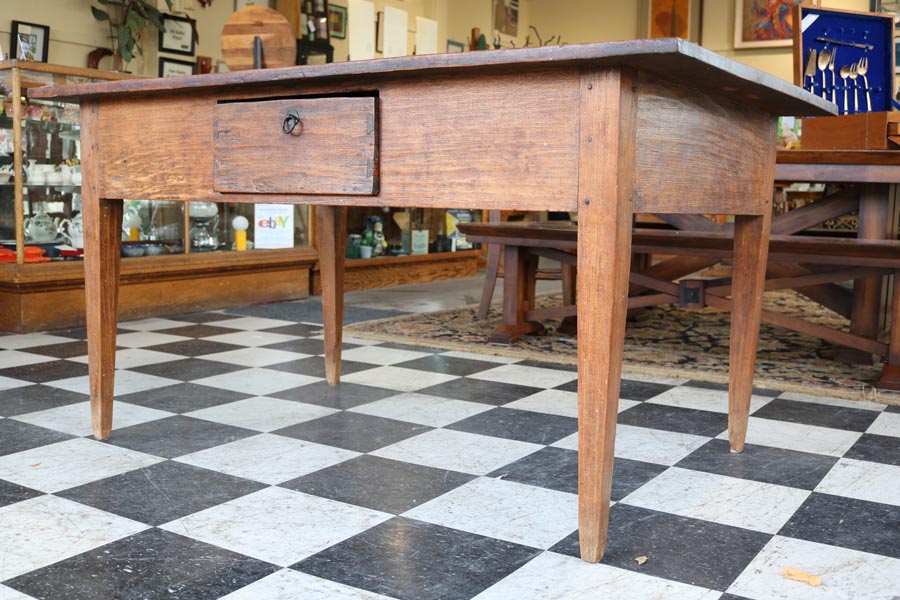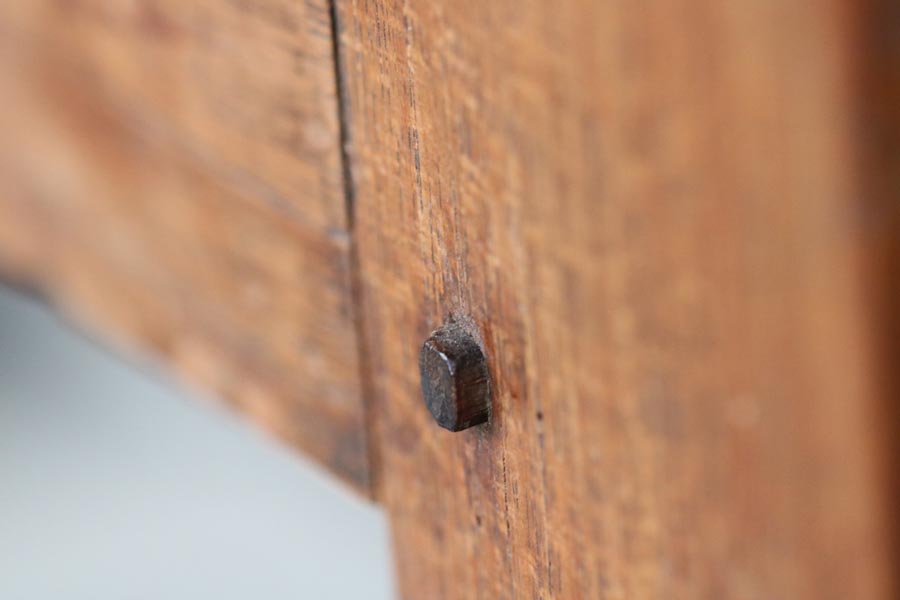BLOG
Estate Store: November Item of the Month!
by Desmond Fuller, Portland Estate Store Assistant Manager
Eighteenth Century Kitchen/Work Table
$710 at the Estate Store in Portland

Carpenters in the 18th and 19th centuries had no concept of planned obsolescence. Furniture was a craft to be mastered, handmade, and the end results were built to last. There was no particle board or machine-processed jointing. Like the Declaration of Independence and the creation of a new nation that was central to so many lives at the time, the simple act of making a table was a statement, a craftsman’s word that their wares were worth their pay.
In the Community Warehouse Estate Store, we see all kinds of furniture from Mid-Century Modern to Rococo, but rarely does a piece cross our threshold that is as historied as this kitchen/work table dated roughly between 1750 and 1850.
Spotted amongst a bustle of donated tables, Estate Store staff noted the rough hand-planed wood, the hand-chiseled dovetailing and the square headed screws, and wondered how old it might be. Shortly after the table was brought into the Estate Store, a volunteer, whose husband’s family has worked in furniture for many years, recognized its antique features. Her husband came to the Estate Store and dated the table between 1750 and 1850 based on its various details, particularly the square head nails.

Most nails at that time were wrought by hand, forged from small iron shanks, which often left them with a small square head. Early hand-smithed nails can be identified by the marks left by hammer blows along uneven shanks and irregular square heads. A square, rather than rectangular nail head, is a good clue to date a piece of furniture before 1800. Hand-forged nails were basically replaced by machine-made nails by the 1890’s. Incredibly, this table retained all but two of its original nails over multiple centuries.

The handling of the wood, with its hand-planing and chisel work, also suggests the time period in which the table was made. The joints on the drawer in the front of the table were handcrafted, carved with a chisel. Today, most dovetailed joints are done with a router and jigsaw or machined on mass produced furniture assembly lines. The runners bare a notable depression, where the wood is thinner that the rest of the board, worn down over years of opening and closing the drawer.

Besides being a historical time-capsule, what is truly amazing about a table like this, is how well it has held up over years of use, apparent in the storied patina and knicks. This table was not in a museum, it was in someone’s kitchen and then someone’s workshop and then someone else’s dining room, and so on down through generations. It is a testament to how something built to last becomes a part of our stories and the stories of those living fifty or a hundred years after us.

Learn more about the unique items waiting for you at the Community Warehouse Estate Stores by following our Instagram and Facebook pages.

